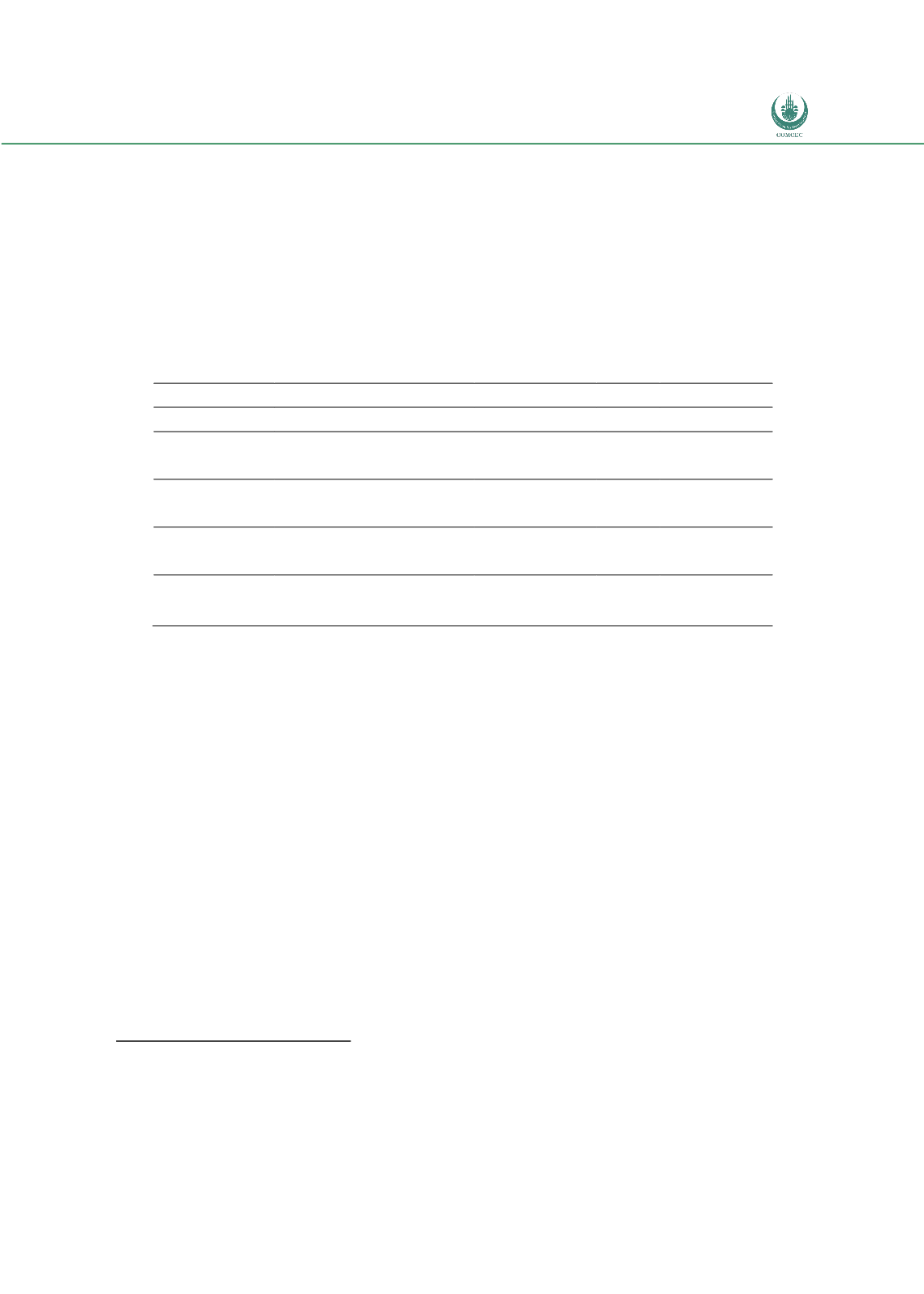

Preferential Trade Agreements and Trade Liberalization Efforts in the OIC Member States
With Special Emphasis on the TPS-OIC
129
Afghanistan did not provide any preference margin to that country as of 2011 (this can be
explained by Afghanistan joining SAARC only in that year). Maldives benefited from
preferences in the Indian market (1.3% point for agricultural products and 4.9% point for non-
agricultural products) and in the Sri Lankan market (2.2 and 2.4% points, respectively).
31
Table 23 shows that - with the exception of Afghanistan - tariffs applied by SAARC members
remain relatively high potentially creating room for significant preferential margins under
SAARC.
Table 23: Simple Average MFN and Applied Tariffs for SAARC OIC Members and India
Reporter
Partner
2000
2005
2011
Afghanistan World (MFN)
5.9
Bangladesh World (MFN)
21.64
15.3 14.4
World (applied tariff) 22
15.4
Maldives
World (MFN)
20.22
20.21 20.5
World (applied tariff) 21.06
20.75
Pakistan
World (MFN)
20.11 (2001) 14.24 13.5 (2012)
World (applied tariff) 20.39 (2001) 14.44
India
World (MFN)
18.3 13.7 (2012)
World (applied tariff)
17.41
Sources: WITS (TRAINS database - aggregated from 6digit data).
In addition to this there remain specific barriers to individual country pairs. For instance, until
2011 Pakistan did not provide MFN to India and instead there was a limited "Positive List" of
1,946 items allowed to be imported from India. Staring from March 2012 the MFN was
eventually granted to India with the exception of a negative list of products prohibited from
being imported from India.
32
Currently there are 1209 items on the negative list and there are
negotiations on gradually limiting the size of this list.
For goods not wholly originating in SAFTA members originating status is generally granted if
there is a change of tariff heading at 4-digit level and value added in the exporting country is at
least 40% (30% for LDC members). There is also a list of product-specific rules of origin.
SAFTA provides for regional cumulation with a requirement that regional value addition is at
least 50% of which 20% is to be in the final exporting country.
31
Maldives exports to these two countries are composed of a few products only, the preference margins are
calculated as trade weighted averages so they do not provide much information on tariff preferences for other
products.
32
For more information see
http://indiapakistantrade.org/FAQs.html
















